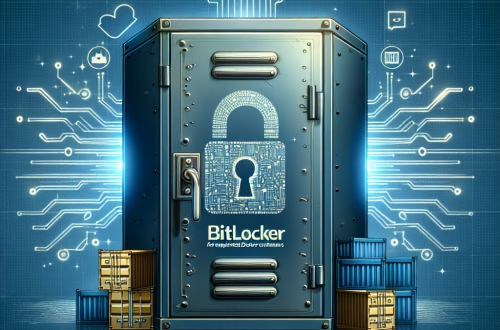BitLocker To Go Compatibility With Windows Home Explained:
BitLocker To Go is a feature in Windows designed to encrypt removable drives, such as USB flash drives or external hard drives, to protect data from unauthorized access. However, Windows Home editions do not natively support BitLocker To Go, as it is exclusive to Windows Pro, Enterprise, and Education versions. This limitation means users of Windows Home cannot encrypt or manage BitLocker-protected drives directly. In some cases, Windows Home users may encounter compatibility issues when attempting to access drives encrypted with BitLocker To Go on systems running Pro or Enterprise editions.
What This Means for You:
- Immediate Impact: Windows Home users cannot encrypt or decrypt BitLocker-protected drives, potentially limiting access to secured data on removable devices.
- Data Accessibility & Security: If you frequently transfer data between systems, ensure compatibility by using non-BitLocker encryption tools or upgrading to a supported Windows edition.
- System Functionality & Recovery: To access BitLocker To Go drives on Windows Home, use the BitLocker Recovery Key or third-party decryption tools.
- Future Outlook & Prevention Warning: Consider upgrading to Windows Pro or Enterprise if BitLocker encryption is critical for your workflow. Alternatively, explore other encryption solutions compatible with Windows Home.
BitLocker To Go Compatibility With Windows Home:
Solution 1: Using the BitLocker Recovery Key
If you encounter a BitLocker-protected drive on a Windows Home system, you can use the BitLocker Recovery Key to unlock it. The Recovery Key is a 48-digit numerical code generated during the encryption process. To unlock the drive, insert the removable device, and when prompted, enter the Recovery Key. Ensure the key is stored securely, as it is essential for data recovery. If you do not have the key, contact the administrator of the system where the drive was encrypted.
Solution 2: Upgrading to Windows Pro or Enterprise
For full BitLocker To Go functionality, consider upgrading your Windows Home edition to Pro or Enterprise. This can be done through the Microsoft Store or by purchasing a license key. After upgrading, you can encrypt, decrypt, and manage BitLocker-protected drives directly from your system. This solution ensures seamless compatibility and enhanced data security features.
Solution 3: Using Third-Party Encryption Tools
If upgrading Windows is not an option, explore third-party encryption tools compatible with Windows Home. Tools like VeraCrypt or AxCrypt offer similar functionality to BitLocker To Go and can encrypt removable drives. These tools often provide cross-platform support, making them ideal for users who frequently transfer data between different operating systems.
Solution 4: Data Recovery via a Supported System
If you do not have the Recovery Key and cannot upgrade your system, access the BitLocker-protected drive on a Windows Pro or Enterprise system. Once unlocked, you can copy the data to an unencrypted drive or transfer it to another secure location. This method ensures data recovery without compromising security.
People Also Ask About:
- Can I enable BitLocker on Windows Home? No, BitLocker is not supported on Windows Home editions.
- How do I unlock a BitLocker drive on Windows Home? Use the BitLocker Recovery Key or access the drive on a supported Windows edition.
- Are there alternatives to BitLocker for Windows Home? Yes, third-party tools like VeraCrypt or AxCrypt provide similar encryption features.
- What happens if I lose my BitLocker Recovery Key? Without the Recovery Key, accessing the encrypted drive is almost impossible.
- Can I upgrade Windows Home to Pro for BitLocker? Yes, upgrading to Windows Pro or Enterprise enables BitLocker functionality.
Other Resources:
Suggested Protections:
- Upgrade to Windows Pro or Enterprise for full BitLocker support.
- Use third-party encryption tools compatible with Windows Home.
- Store BitLocker Recovery Keys securely for data recovery.
- Avoid using BitLocker-protected drives on unsupported systems.
- Regularly back up important data to prevent data loss.
Expert Opinion:
While BitLocker To Go is a powerful tool for data security, its incompatibility with Windows Home underscores the importance of planning for system upgrades or exploring alternative encryption solutions. As data breaches become increasingly common, ensuring robust encryption across all devices is critical for protecting sensitive information.
Related Key Terms:
- BitLocker To Go
- Windows Home Compatibility
- BitLocker Recovery Key
- Third-Party Encryption Tools
- Data Security
- Windows Pro Upgrade
- VeraCrypt
*Featured image sourced by Pixabay.com




